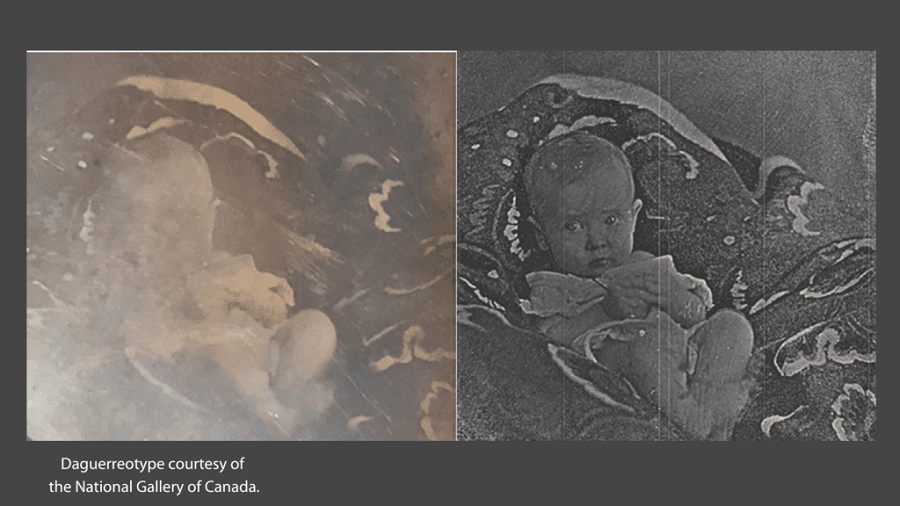
Researchers at Western University have developed a wholly new technique for bringing ancient daguerreotypes back to life from total ruin.
The new technique could even be used to reconstruct other historic, damaged artifacts such as ancient texts and even fossils according to the investigators.
A group of researchers led by Chemistry professor Tson-Kong (T.K) Sham recently built upon an older technique they had first explored in 2018 for rescuing corroded daguerreotypes from the cumulative effects of corrosion.
Daguerreotypes are among the oldest types of photos in existence, having been developed roughly 180 years ago by French inventor Louis Daguerre.
In a study published in April, the researchers, from Western University in Ontario, Canada, explain their process for reconstructing these earliest types of photographic stills using what’s called a synchrotron imaging technique.
By applying “softer X-rays” T.K Sham’s research team was able to reconstruct images from even the most deeply corroded early to mid-19th-century plates.
Specifically, they used what are called VESPERS and the SXRMB beamlines from the research facility Canadian Light Source (CLS), in Saskatchewan, Canada, and Advanced Photon Source at the Argonne National Laboratory in Chicago, Illinois.
The daguerreotypes were lent by private collectors and the National Gallery of Canada for this research/restoration project and many of them had been severely tarnished over previous decades through general deterioration and in many cases from poor previous cleaning attempts.

However, despite the severity of the damage in many of these plates, the researchers were able to perform remarkable levels of restoration using the above technique.
For the conservation of old images and other objects, Sham and his team’s techniques could be a “game changer” according to a post on the subject by Western University.
The same article also mentions that the technology could be used for artifacts and fossils with surface deterioration. Obviously, it could also potentially be used to restore ancient, badly deteriorated documents.
During their work, the researchers managed to uncover images of subjects such as a man and woman fashionably dressed in 1850s clothing, a baby wrapped in blankets and a number of 150+-year-old portraits.


All of these particular daguerreotypes were tremendously deteriorated before their restoration.
According to Sham, his team’s synchrotron technique can work in any case where image particles beneath the surface deterioration of a daguerreotype remain intact and in place. He also states,
“Revealing images that seemed lost forever is what’s most exciting. We get a glimpse of people living in the 19th century that we wouldn’t have otherwise and learn about their history and culture.”
When it comes to daguerreotypes, each image is unique since the process doesn’t use negatives. The technique was invented in 1839 and involves applying specific chemicals to silver-coated copper plates to make them light sensitive.


These plates could then be placed in a daguerreotype camera to slowly capture an image as light impresses visual forms on them. After this image capture process, the plates would be given a mercury vapor treatment to permanently fix their images to them.
Because of its difficulties, the daguerreotype process didn’t last long. Easier more practical chemical photographic techniques replaced it in just 25 years.
Sham further explains that the same X-ray process his team uses to reveal the corroded images in these plates could also potentially damage them.
He adds,
“X-ray usually doesn’t damage metals visibly, so I didn’t think it would affect the plates, but perhaps chemical impurities or the corrosion itself on the daguerreotype got heated and left a small mark where the X-ray beam light went through,”
There are likely thousands or more deteriorated daguerreotype images being held in archives and personal collections around the world today. With this technique, many of them could finally again be brought to light for their historical and aesthetic value.






